You would have thought upon reading the Bible with an unprejudiced view that love within marriage and the mutual enjoyment of sex of spouses were things to be taken for granted in both New and Old Covenants and yet we discover that these things were basically absent in not only Western pagan cultures but throughout what has come to be misnomerically called 'Christendom'. The chief opponents of this natural state of marriage - where love and sex are enjoyed freely, responsibly and in abundance - are seen to be in the main the fault of government, religious orders, and mysticism. This repression of a natural God-given urge by these three blocking agents was not only inspired - I believe - by Satan, but was planned to lead to such a psychic catharsis that it would one day burst (conveniently at a time chosen by him to further his own despotic ends) and result in its very opposite: excess and perversion. Thus what Yahweh pronounced to be good - heart-love and the mutual enjoyment of sex - were strangled at one end of the metaphorical pipe and then encouraged to burst forth unrestrained at the other, doing immeasurable damage at both ends.
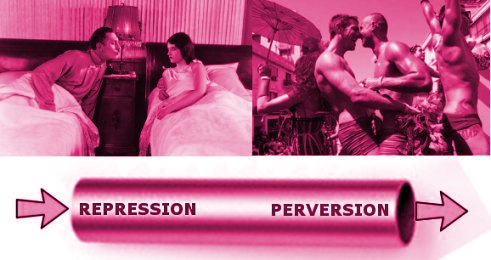 Unscriptural repression leads ultimately to antiscriptural perversion
Unscriptural repression leads ultimately to antiscriptural perversion
With a proper understanding of the sexual factor in the divine scheme of things, it becomes possible for us to break the artificial dams of aesthetic prudery whilst at the same time ensuring that the resultant floodwater does not go unchecked and so bring about destruction and misery of a different kind. Satan has fooled us at both extremes - fooled us into believing that sex is unnatural, dirty and sinful at one end, and at the other led us to believe that unrestrained sex without Torah is our right and a more advanced and enlightened view.
As I have discussed elswhere on this site, the Western way of being has always been, and continues to remain, Greek. To understand all the sexual repressions and excesses of Western man we need only turn to the original philosophy of sex as understood and lived by this ancient culture. There were, of course, different phases of sexual history as reflected in attitudes and practices. Whilst basically a monogamous society, Greece excelled in perversion. Bisexuality was common place in the five hundred years before Yah'shua (Jesus) and almost a state institution. High class prostitutes were regarded as superior to wives and women of virtue and although Greek men looked for faithful love from their wives they tended to seek after it by bribery and trickery. To 'fall in love' was considered a reprehensible weakness and was by every means suppressed. Romantic love came to be viewed as an illness. Marriage was merely something that one 'did' as a matter of custom whilst 'love' - sexual or otherwise - was sought for outside the institution of marriage. Thus marriage was the place to establish and home and raise children whilst sex and the fun that accompanied it was sought through prostitution. Wives were regarded as little more than housekeepers and mothers, and never as lovers. Thus in ancient Greece we see an unnatural and lawless cleavage of the love/sex principle that was bound to result in psychoses.
 Most Western sexual perversion comes from the pagan Greeks
Most Western sexual perversion comes from the pagan Greeks
To the west of Greece lay Rome which was to eventually supplant the Helenic culture as the dominant one in Europe. The Romans had somewhat different views of marriage and sex. Pagan love was without conscience, unabashedly lusty and entirely free of philosophical considerations. Whereas the Greeks had established a double system of marriage and prostitution and rationalised it, the Romans were even more hedonistic. The Greeks had structure - however perverse - whereas for the Romans is was simply free-for-all lust. Adultery became a sport and manuals were even written to encourage unfaithfulness. If the Romans were more advanced in anything it was their belief that men and women were entitled to mutual orgasm whereas for the Greeks the only consideration was the men's sexual enjoyment. In spite of this the histories record little in the way of emotional satisfaction for the women, which is hardly surprising.
 The pagan Romans weren't just as perverse as the ancient Greeks
The pagan Romans weren't just as perverse as the ancient Greeks
When Christianity came onto the Roman scene a complete reversal of sexual fortunes took place. Not so at the beginning when the primitive New Testament Church/Messianic CDommunity was in the ascendancy. But as false ascetic ideas began to creep their way in, and what we know as Roman Catholicism emerged out of the crucible of religious syncretisation, a diametrically opposite view of sex was born. From then on sex became joyless and full of guilt.
The reason this happeded was undoubtedly what I call the 'Pendulum Effect'. Because the pagan Romans were so debauched, views on sex swung in the opposite direction and to the oppose extreme. By the third century AD biblical sex had been subverted and replaced by an alien belief in the superiority of celibacy and the filthiness of the sexual act and we find people like Jovinian excommunicated by the Pope for arguing that marriage was superior to celibacy. This aescetic and repressed view of sex lasted through the whole Dark Ages. Being as it was unnatural, not suprisingly many bizzare and perverse practices evolved. Sex was considered something worthy to be sacrificed and self-torture and denial lauded and preached.
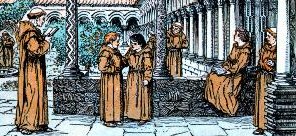 The Catholics turned to monasticism in response to pagan perversion
The Catholics turned to monasticism in response to pagan perversion
The result of this unnatural and destructive suppression of the God-given sexual urge was, understandably, a morbid preoccupation with sex - not in fulfilling the sexual desires but in waging a hopeless war against it. The more sex was condemned the more neurotically inflamed eroticism was fanned, leading to even more brutal tortures such as people burning off the tips of their fingers to resist temptation.
This mutilation of the soul was given a theological basis by St.Augustine who promoted an extreme version of Christian guilt throughout his books. Like the story of Roman sex itself which began as a lusty paganism and which then swung into utter repression and aescetism, Augustine began his life as a lusty youth. After converting to Catholicism he turned his hatred towards the human body and the godly pleasures given to them by Yahweh. One might say that he, of all the theologians, systematically defiled the Image of Elohim (God= by even stating that we are born between faeces and urine as an illustation of his contempt for both the physical body and sex. By 585 AD Catholics were arguing that women did not even have a soul which in turn led to to marriage coming under clerical domination.
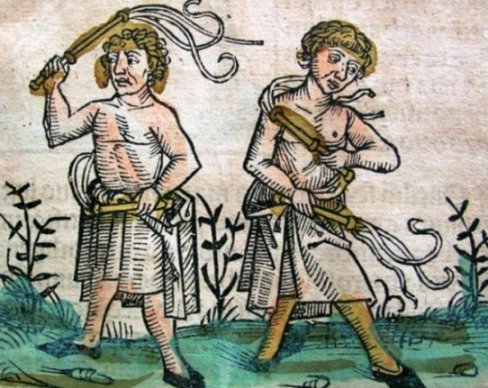 The Catholic fear and hatred of sex led to self-mutilation
The Catholic fear and hatred of sex led to self-mutilation
What Catholicism did was to reduce sex to an unromantic, harsh and ugly act. Penance was cynically performed as often as was required and women ended up as little more than pieces of literal property. The result of this was a major psychosis thoughout the whole of Christendom leading to sexually repressed and frustrated priests turning in desperation to misstresses. The scandal-ridden history of the Popes is well known with their lechery, pedophilia, incestual relationships, pornographic libraries, and illegitimate children. The Catholic Church sanctioned wife-beating and levelled only very light fines for wife-killing. Noblemen had the 'natural right' to ravish any peasant woman on the road and to deflower brides of vassals.
Satan successfully reduced the sacred and joyful act of marriage into something disgusting and evil. So psychologically warped did the Catholics become that St.Jerome stated that anyone who ardently loved his wife too much was a sinful adulterer. White became black, and black became white. Sexual love was only permitted in one position (the 'missionary position') and never during penance nor on Sundays, Wednesdays, Fridays and holiday seasons, and then never to have fun but only to conceive a child. So was marked the first millennium of Roman Catholic 'Christendom'.
It was not until the 11th century that things began to gradually change. What we call the 'romantic ideal' was begun in the French courts where noblemen developped a completely new set of romantic love concepts from which a unique man-woman relationship arose that had been unknown to Western Civilization for over eight centuries. And though one might be tempted to think that this was 'natural, biblical' courtship and love-making it was not for in truth it was a syncretisation of lusty paganism and Catholic 'Christian' concepts.
April 25, 1227, Ulrich von Lichtenstein started his incredible journey from Venice to Austria dressed as the female goddess Venus, challenging in a jousting battle every man en route. He did this in the service of a woman who continually scorned him. Three centuries later this journey served as the basis for the satire, Don Quixote de la Mancha.
 Ulrich von Lichtenstein
Ulrich von Lichtenstein
Courtly love or 'true love' was a clandestine, bittersweet relationship of endless frustrations. Such a relationship was supposedly spiritually 'uplifting', making the knight a better man and warrior by creating an artificial emotional tension which was then channelled elsewhere. No love existed in marriage, but the pain of frustrated courtly love was considered uplifting, delicious and exciting. The sex act was considered false love, but 'true love' was kissing, touching, fondling and perhaps even naked contact.
Troubadours believed that unsatisfied passion improved one's character. They also believed that love could not exert itself between married people. They could give freely only without the compulsion of necessity (e.g., the compulsion of married people who were duty-bound), itself a perversion of biblical truth and a demonic impulse which continued down the centuries.
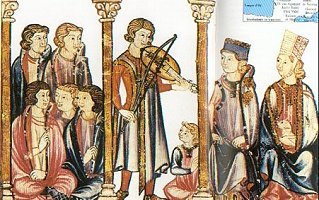 French troubadours
French troubadours
For the first time, love was combined with character ennoblement (except to some degree with Greeks in their homosexual and courtesan relations). Troubadour poets begged their ladies not to grant them sexual favours under any conditions (e.g., Dante's love for Beatrice in Vita Nuova who was a source of spiritual guidance rather than a sexual female). In France, William II, Duke of Aquitaine (born 1071 A.D.), was the first of the troubadours. He introduced a new life style, love lyrics and social manners. His courtly-love concepts swept across Europe and are still with us today.
In 1122 A.D., William's granddaughter, Eleanor, became Queen of both France and England. She set up cultured courts and established the Court of Love, which codified and promoted courtly love. In Eleanor's court, a cleric named André wrote a love manual, Tractatus de Amore et de Amoris Remedio ('Treatise on Love and Its Remedy'). This was a serious exposition on courtly love and its rules. Eleanor's court held that love should be an equal relationship, consisting of an interplay of mutual emotions. This was a radical idea for the 12th Century but the court also held that love can exist only in affairs and not in marriage.
 Queen Eleanor of France and England
Queen Eleanor of France and England
Courtly love introduced the elements of emotional relationships between men and women for the first time. This was a revolutionary concept where love was based on mutual relationships involving respect and admiration. Courtly love elevated woman from a servant and housekeeper to a more equal partner and an inspirer of progress. But the problem with this courty love was that its spirit was essentially pagan and did not include Elohim (God). And though we might perhaps forgive these courtiers for mocking the loveless religion of Catholicism the result was to cast out the baby with the bathwater.
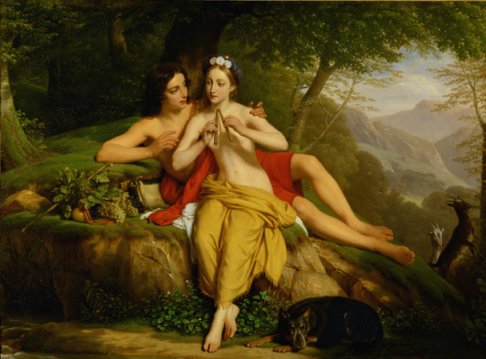 Pagan, not Christian, love competed with Catholic suppression
Pagan, not Christian, love competed with Catholic suppression
The Catholic Church predictably reacted. As an illustration, St.Thomas stated that to kiss and touch a woman with delight, even without thought of fornication, was a mortal sin. Priests and religious fanatics began a 300-year period of flagellation where they paraded in hordes from town to town praying and whipping themselves and each other into bloody pulps. The result of this satanic 'good cop, bad cop' ploy was a reaction not just against bad religion but agsinst all religion that led ultimately to the Renaissance and secular liberalism. The spiritual/philosophical force behind this anti-Catholic view of love was essentially pagan Aristotlism.
 Thomas Aquinas' anti-sex theology undoubtedly played
Thomas Aquinas' anti-sex theology undoubtedly played
a significant and disasterous rôle in usshering in the
humanistic renaissance that has since devolved into
modern hedonistic anti-Christian Western culture
The Catholic Church responded with naked terror. It moved in and a new breed of malefactors not known before appeared. They were the inquisitors who were backed by a series of murderous papal pronouncements and bulls. By 1450, the official Catholic dogma was established that witches existed and could fly by night. All physically desirable women were projected by the church as evil sorceresses. The church was losing its power and this was their means to fight the rising rationalism and happiness brought on by the emerging Renaissance. Inquisitors Jacob Sprenger and Henry Kramer, Dominican brothers and professors of sacred theology at the University of Köln (Cologne), armed with their influential book. Malleus Maleficarum ('The Witches' Hammer'), and with Pope Innocent VII's infamous Bull of 1484, extracted from women 'confessions' they wanted with horrible tortures. They burned to death over 30,000 'witches' charged with having sex with the Devil, whom the Church insisted had a brutal penis covered with fish scales.
The Satanic trap was set with both options dead-ends - the one offering brutal Catholicism and the other a resurrection of the lusty paganism of ancient Greece and Rome with a more 'civilised' spirit. And it must be remembered that modern views of romance stem largely from this humanistic/pagan mindframe. Crosscurrents and contradictions raged between the lawless pleasurable love arising from the neo-pagan Renaissance spirit and the hatred of women (wicked witches) arising from the dark and malevolent spirit of the Catholic Church. And nowhere was there the third option - the biblical option.
We see this humanistic anti-aescetic lawlessness in so many ways from these times. Queen Marguerite of France was involved in intense but platonic love affairs with twelve men simultaneously She also wrote a collection of 72 tales titled Heptameron that were bawdy and ribald. These were tales of platonic and 'perfect love' mixed with orgies, incestuousness, partner swapping, sexually insatiable priests, etc.
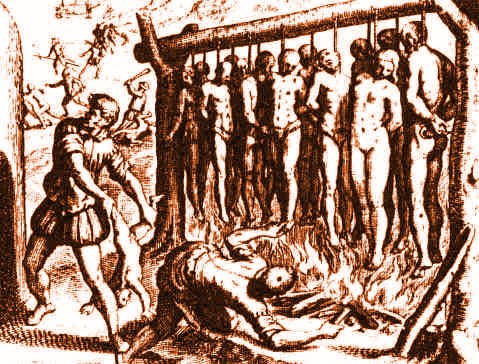 The mass burning of 'witches' by the Catholic Inquisition
The mass burning of 'witches' by the Catholic Inquisition
Marriage at this time was based on both physical and financial aspects. Love was neither the basis for marriage nor any essential part of it. Marriage was a lifelong financial transaction. Marriage usually took place at 14-16 years old, and sometimes at 2-3 years old and included a dowry plus income and property guarantees.
Henry VIII in his youth (before his horrible self-debauchment) was slim, athletic, handsome and intellectual. He was the first major figure to combine love and marriage represented by his long battle with Bishop Wolsey and Pope Clement VII about divorce and marriage to Anne Boleyn.
Woman's status was changing. Writers were trying to play both sides of this change (e.g., a book by Pyvve titled, The Praise and Dispraise of Women). Contrasting approaches also appeared in classical literature (e.g., Shakespeare's Romeo and Juliet vs. The Taming of the Shrew).
New concepts of joining the mind and the body in love and marriage were developing. The middle class was being attracted to the romantic love concepts of the nobility. Renaissance 'enlightenment' with its atheistic echoes made sex seem not so sinful and disgusting as the Roman Church projected. The middle class began to associate sex with love.
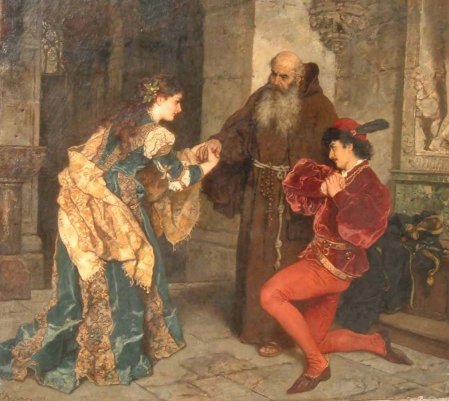 Shakespeare's Romeo & Juliet
Shakespeare's Romeo & Juliet
The completely new concept that young married should live together alone in a dwelling of their own began developing in the 17th Century. While the status of woman as a human being and as a love object was rising, her legal status remained little better than in the Middle Ages. All property belonged to the husband and wife beating was still legal.
The Puritans (1500-1700) were not anti-sex. Quite to the contrary, they were value-oriented about love and sex, even romantically sentimental. The Reformation combined the enlightened Renaissance (marital sex was held as good and wholesome) with the malevolent Catholic position that continued to burn women as witches.
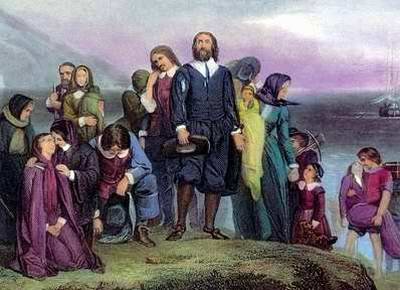 The early Puritans believes in romance, sex and family life
The early Puritans believes in romance, sex and family life
Dr. Martin Luther (1483-1546) battled against Catholic asceticism in advocating the enjoyment of every pleasure that was not sinful. Luther was lusty and vulgar in the 'eat, drink and be merry' style. He claimed to have broken wind in the Devil's face and to have told him to 'lick his ass'. He fought Rome and claimed that celibacy was invented by the Devil and that priests could marry. He asserted marriage was not a sacrament at all, but a civil matter. In 1532, he held that Christ probably committed adultery with Mary Magdalene and other women so as to fully experience the nature of man. Luther asserted that sexual impulses were both natural and irrepressible. He broke from Rome and married. Luther's reformation rapidly spread across Northern Europe.
John Calvin (1509-1564) was the opposite of Martin Luther. Calvin was cheerless and had a viciously malevolent theology based on total human depravity and the implacable wrath of Elohim (God). An unhappy and unhealthy ascetic, he had ulcers, tuberculosis, and migraine headaches and considered life of little value and Elohim (God) as a harsh tyrant. Calvin set up a brutal political theocracy in Geneva. No dancing, fancy clothes, and jewelry were allowed. The death penalty for adultery was restored. Even legitimate love was stringently regulated and solemn weddings instituted with no revelry. The Calvinistic marriage had two functions: (1) to produce offspring, (2) to eliminate incontinence.
 The two great reformers had some bizzare ideas about sex
The two great reformers had some bizzare ideas about sex
Most Puritans thoroughly rejected the inhuman joylessness of Calvinism, except for a vocal minority such as John Knox in the American colonies. His Blue Laws of the 1650s were against Sunday amusements, smoking, drinking, gambling, fancy clothing, etc. He also promoted public whippings, scarlet letters, and execution for adulterers.
Stern Puritan tracts were often only expressions that masked moods of mischief and romance. Church trial records show that much sexual 'sinning' existed. But only sex outside of marriage was attacked. Puritans greatly enjoyed sex inside marriage and condemned the 'popish' concept of the virtue of virginity. Most Puritans were tenderly romantic and good lovers.
The image of the sexless and heartless Puritan is false. Consider the 17th Century Puritan, John Milton (Paradise Lost); to his credit he was virtuous, but experienced a healthy view of sex. He displayed idealistic and romantic views about marriage, but sent tracts to Parliament urging modern-day, easy divorce ("with one gentle stroking to wipe away 10,000 tears out of the life of man") on account of a failed marriage. Milton's Paradise Lost projects a benevolent view of Adam and Eve in a romantic love context. Milton entirely rejected St. Augustine's malevolent views of women, sex and life.
16th Century Puritans tried to combine the ideals of love with the normality of sex into marriage. They also valued money more than leisure, and success more than culture. Woman's status improved under Puritanism (e.g., a woman could separate, even divorce, if beaten). Property rights and inheritance laws improved and marriage became a civil contract.
17th Century Puritans were pious and severe, but also strongly sexed and somewhat romantic. It was not until the 18th Century that Puritans started hellfire-and-brimstone sermons and the 19th that they developed the stifling prudishness of the Victorians.
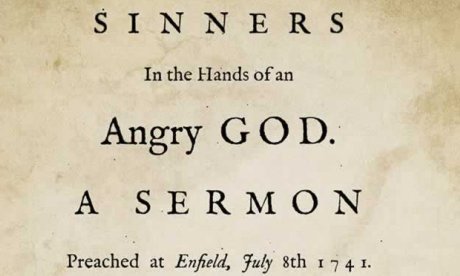 The title of a 1741 published sermon of Puritan Jonathan Edwards
The title of a 1741 published sermon of Puritan Jonathan Edwards
By mid-18th Century, emotional love had fallen out of favor among the upper classes and intellectuals (rationalists). They wanted a new approach that would be more stable and productive. They turned from emotion to reason. Theology and metaphysics yielded to mathematics and physics. They scorned enslavement to emotion. Emotionalism became intolerable to men in the Age of Reason. They wanted women of intellect. They separated or dichotomized the mind from the body and created a latent cultural psychosis of their own.
The epitome of rational gallantry was Louis XIV, the Sun King of France. All Europe saw him as the ideal of the aristocracy and a model for all lesser men. He established elaborate rules of etiquette that served to suppress all evidence of emotion, thus compounding the psychsosis in the upper classes that would later foment revolution. Nobility concealed feelings with the aid of detached reason and carefully rehearsed manners.
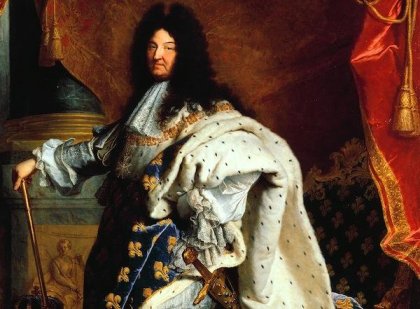 Louis IV of France
Louis IV of France
In between the gallant rakes and the subdued Puritans arose an upper-middle-class man (as described in Samuel Pepy's diary of 1683). The age of enlightenment had arrived. New scientific and rational outlooks replaced mystical and intuitive ones of the past. A liberal view of man that saw him as basically good, worthy and admirable replaced the Catholic theology that saw man as besotted and laden with guilt and sin whilst bypassing entirely the actual biblical teaching on these subjects.
Never before had such emphasis been placed on manners. An artificial code of formal behavior was consciously and deliberately applied in order to control one's emotions. The emotional life of humans disappeared behind the façade of elegant manners and icy self-control. Almost any behavior was acceptable as long as emotions were concealed. Even private intimate convensations were stilted with remote and detached words.
The rationalists scorned the gloom of Western Christianity. They scrapped the church's concept of women as evil, but they often viewed women as ornaments, toys or unreasonable nitwits and still held women as subservient.
By the 18th Century, love conceived and idealised the mythical Don Juan who was impeccably mannered, lustful, haughty and false. Love was often reduced to malicious sport with the motive to seduce. Giovanni Jacopo Casanova (born 1725) was an adventurer, serial fornicator and adulterer who had a brilliant mind. He wrote two dozen books covering math, history, astronomy and philosophy.
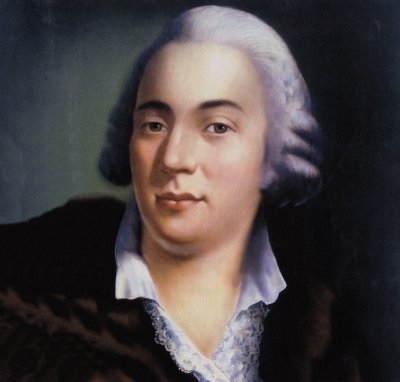 Casanova symbolised the height of sexual decadence
Casanova symbolised the height of sexual decadence
By mid-18th Century, flirtation and romance were no longer an exclusive part of aristocratic tradition, but were common in the bourgeois or middle class. Benjamin Franklin was a rationalist with guiltless views of sex.
During 19th Century Victorianism, the ideas of nobility and birthright were declining with the rise of capitalism and the industrial revolution. Newly rich entrepreneurs were growing wealthy and tried to copy ways of the upper class with lower class customs. Urbane control of one's emotions was losing popularity to 'sensibility'. Sensitivity became the ideal. Love now became a mighty force and noble goal. Men grew shy, inhibited and fearful of rebuff as they began backing away from sexual excesses. They sought not the dazzling flirtatious woman, but the shy, virginal one. If the monogamy-only culture ever reached its apex this may very well have been it.
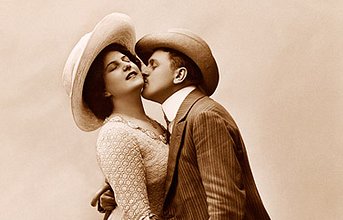 The Victorian renaissance
The Victorian renaissance
To its credit, Victorianism stood for high moral standards and close-knit families but had somewhat oever-glorified views of women. At the same time, prostitution was widespread and the structure of marriage was crumbling as women - influenced by atheistic radicalism and liberalism - began revolting against their neo-biblical status.
The philosopher Jean Jacques Rousseau was one of the most influential forces in forming a new, viciously oppressive political 'liberalism' that was combined with slobbering sentimentality. His sex life was one of incompetence, misery and frustration. He often displayed sick sentimental tears. He hungered for cruelty and beatings and lived with women vastly inferior to him in order to boost his low confidence and weak self-esteem. He gave away his own children. He wrote with maudlin sentimentality. Europe was deeply under Rousseau's influence. After his death, his ideas were eagerly adopted by the social 'intellectuals' and 'liberal' politicians and have dominated them to the present day.
 The French philosopher Jean-Jacques Rousseau was the catalyst that has made liberalism and its sexual mores the established norm today
The French philosopher Jean-Jacques Rousseau was the catalyst that has made liberalism and its sexual mores the established norm today
Rousseau appealed to the seriousness of the middle class. Laughter and wit went out of style. Emphasis began to focus on female modesty. The social 'intellectuals' gradually became anti-sex and anti-pleasure oriented. Thomas Bowdler censored Shakespeare's works in 1818. Immanuel Kant, the philosopher from Königsberg, died at eighty, a virgin. Open displays of sentimentality, melancholy and tearfulness became chic. For example, the Irish poet, Tom Moore, got sentimental even for the stones in a road.
The clinging-vine personality in women developed: women should be modest, virtuous and sweet. They should be weak and anxious to lean on and be dominated by strong men.
With rising prosperity and development of public school systems made possible by the industrial revolution, children began to move outside of the home, depriving women of many of their functions. The reasonably affluent man no longer needed an all-work woman. He could now concentrate more on a woman's value as a love partner.
Togetherness concepts developed. With his sweet home-making wife, a new style of home-life patriarch arose. The stay-at-home husband was to spend every available hour with his good wife (e.g., Corbett's book, Advice to a Young Man, frowns on social activities with others in stating, "If they are not company enough for each other, it is but a sad affair.") Women had to be 'morally' spotless. This led to excessive prudishness in word and actions. Prudishness then spread from sex to bathroom functions. The Encyclopaedia Britannica of 1842 stated that the female had no privileges except to barely consent or refuse a man. A woman being courted was permitted to summon up a 'timid blush' or the 'faintest of smiles' to convey her feelings. The Brownings supposedly never saw each other entirely naked.
United States Surgeon General, William Hammond, stated that decent women felt not the slightest pleasure during intercourse. Many doctors considered sexual desire in women to be pathological and warned that female passion could cause sterility. Many thought only prostitutes could enjoy sex.
The woman's rôle was glorified and idealised. Women literally made themselves helpless through fashion. They immobilised them, selves in laces and stays. Victorian men were patriarchal and stern, but they played this rôle at their own sexual expense.
Out of this Victorian repression arose a great hunger for a fantasy sex life. Flagellation, pornography and prostitution rose dramatically (e.g., 50,000 prostitutes in London in 1850 and over 300,000 copies of the pornographic book, A Monk's Awful Disclosures, were sold before the Civil War). Nearly all written works about the private lives of Victorians, on the other hand, were 'purified' by omitting all references to sex and love life.
The 'Emancipation Movement' started in 1792 with Mary Wallstonecraft and her attacks on marriage and the subjugation of women and yet she retained sufficient values as to condemn masturbation and advocate of government force to stop prostitution. In 1833, Oberlin was the first college to admit women. In 1837, Mt. Holyoke became the first women's college. With the rise of capitalism, women gained economic rights never before enjoyed. Capitalism broke up autocratic church power and the feudal-nobility pattern.
During the 1840s, the new middle class began growing rapidly. Capitalistic economics were accelerating the dissolution of class differences along with ancient social ties and customs. The rigid Victorian home was threatened by female suffrage, divorce reforms and free love. Victorianism was a desperate delaying action (in collusion with the church) against inevitable changes made by capitalism and the industrial revolution. Victorianism and religion tried to stem the tide of secular liberalism but without success. The pendulum was by now swinging inexorably in the opposite direction towards moral anarchy.
With the partial emergence of capitalism grew a new age of romantic love. America's increasing divorce rate reflected not the failure of love but the increasing refusal of people to live without love and happiness. The love patterns of all modern societies were replaced by America's model because so many people were drawn to the romantic love style that combined sexual outlet, affectionate friendship and family functions, all in a single relationship. Romantic attraction not only became desirable, but became the only acceptable basis for choosing a lifelong partner.
Romantic love was made possible by capitalism and the industrial revolution. With romantic love, the sexual desires of both partners could be satisfied within marriage. All the tenderness and excitement of love could coexist with household cares and child rearing. Romantic love was the most difficult and complex human relationship ever attempted ... but the most appealing and satisfying.
The Bolshevik Revolution of 1917 detached individual values from sex (e.g., they promoted the concept that sex was no more than drinking a glass of water). The modern Sexual Revolution discarded the 19th Century patriarchal Victorian-Christian patterns.
Children were no longer an economic asset, but a costly luxury valuable only for love. For example, in 1776, Adam Smith estimated an American child was worth £100 in profit before he left home; by 1910 a city child cost thousands of dollars; by 1944 a child cost about $16 thousand to raise to adulthood; by 1959 a child cost about $25 thousand to raise. In 1975, costs for raising a child to adulthood will average $50-$75 thousand, not allowing for future inflation.
Isadora Duncan (1900-1927) was a symbol of flaming feminism with her free-love and unwed motherhood stances. She claimed that sexual love should be ecstatic for women. Margaret Sanger staged a fight for birth control claiming that a woman's body belonged to her alone. She published birth control information in 1914 and opened birth control clinics in 1916. Catholic elements had her arrested and jailed. But her work spread. By 1930, over 300 birth control clinics had been established.
 Isodora Duncan
Isodora Duncan
Margaret Sanger separated lovemaking from procreation which brought the traditional ideal of a monogamous, faithful marriage under attack. Complete freedom by each partner was advanced by intellectuals such as H. G. Wells, Bertrand Russell, Havelock Ellis, Judge Ben Lindsay. Havelock Ellis offered ideas in 1900 that were remarkably similar to those advanced in 1973 by the O'Neill's in their book, Open Marriage.
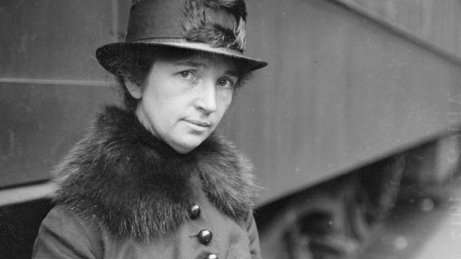 Margaret Sanger
Margaret Sanger
The Sexual Revolution also stressed the mechanical aspects of the sex act. In Marie Stopes' book, Married Love (1918), the woman's right to orgasm was promoted. Orgasm was described as a thing-in-itself. The Marxist Wilhelm Reich proposed that orgasm failure was the cause of major mental and physical diseases. He even advocated masturbation to combat cancer viâ flow of sexual energy.
Free love and open marriage developed in the 20th Century along with serial polygamy viâ repeated marriage and divorce. Sexual enjoyment was elevated as a human right. The need for reassurance of one's personal self-esteem made this new form of romantic love popular and desired. Themes of love, heartbreak and eventual happiness became popular and dominated the soap operas.
Dating started in the 1920s as a new way of mate selection made necessary by city life. Shy, passive femininity was being discarded. The crucial feature of dating was freedom from commitment while young people learned and experimented.
Dating was criticized by many altruistic sociologists and social "intellectuals" as a loveless, competitive contest. But the liberals claimed it was a healthy breakthrough and generally led to cheerful and happy activity. Dating, they claimed, was an educational process, leading from playful heterosexual behavior to companionship and love.
Premarital relationships became more open and intimate than relationships of the past. Potential partners were able to know each other much more deeply through intimate dating.
 Dating, less than 100 years old, was unheard of before the 1920's
Dating, less than 100 years old, was unheard of before the 1920's
Many conditions were similar to Roman times (economic and legal emancipation of women, well-to-do city life, children being a luxury rather than an asset, and sexual enjoyment deemed a right for all). One profound difference existed ... Romans moved away from married life while Americans became more marriage-minded than ever before. And when marriage failed, Americans would divorce and head right back into another marriage.
The feminist revolution gave women the right to be 'equal' to men by changinging their biblically-assigned rôles. Inequality for females is no longer today a matter of law. Men and women now have essentially the same educational and economic opportunities, but most American wives still do not work.
To the average Western man, his job is what he is. To the average woman, a job is only to make money. Because of the anti-biblical pressure exerted by feminists in the media, the average American wife suffers from a chronic, low-grade dissatisfaction, diminished self-esteem and increasing boredom. Feminism has meant that most women are confused about their rôle and do not really know what they want to be in life. Surveys of two college campuses indicated that 40% of the coeds admitted 'playing dumb' with interesting men because many men feel threatened by overtly intelligent women (M. Kamarovsky, Women in the Modern World, Little, Brown & Co., 1953).
 Working women suffer from stress, dissatisfaction and boredom
Working women suffer from stress, dissatisfaction and boredom
Modern romantic love is almost everyone's goal, its value and purpose of romantic love is, above all else, directed toward the fulfillment of supposed emotional needs.
The baneful effects of the feminist revolution has meant that all forms of altruism, religion and mysticism are regarded as destructive fraud and are rejected. The pyramid of values taught in the Bible has been turned on its head so that the quest for the greatest sexual 'kick' replaces a personal relationship with Elohim (God) in Christ. Even in Christianity this topsy-turvy form of 'love' is often placed alongside the Divine Imperative and competes with it.
Christian/Messianic polygamy entered this milieu at the end of the 20th century. The result, in my opinion, has been a disaster. Instead of offering the liberation that was promised by its American proponents, it has simply replaced traditional monogamy as the pinnacle of obnoxiousness in the minds of the secular liberal. 'Christian' polygamy has been racked with scandal, largely discrediting it in the public mind.
The problem with modern Western polygamy is not in the concept so much as the overall mindframe of the modern Western man for whom polygamy has become an extension of the capitalistic drive for possession and control. Western man is quite simply unsuited to the lifestyle in its present conception as an evolution of the present ways and norms of contemporary being.
There have been a number of reactions and experiments to break this mould. Extreme forms of Messianism have evolved that very much reflect - at least in spirit - the harshness and tyranny of the continuing Mormon polygamous cults with their unbiblical views of total control and emotional deprecation of women. Oppressive Calvinistic concepts strongly dominate that have birthed the modern polygamist 'ultrapatriarch' and his repressed harem.
 Fundamentalist LDS Warren Jeffs and his harem - he is
Fundamentalist LDS Warren Jeffs and his harem - he is
serving time in prison for contracting child marriages
Echad Christian Polygamy developed from the 1980s into what many are now calling gentle polygamy. It is very different both from the contemporary Christian/Messianic polygamy of North America and the older Mormon polygamy which inspired some parts of the movement there. Whilst recognising the Christian impulse to self-sacrifice and self-limitation, Echad Christian/Messianic Polygamy or Holy Echad Marriage (HEM) does not impose these things but allows all to choose freely under the movement of the Holy Spirit. Love is unashamedly romantic and sexual whilst always keeping Christ as the principle focus and goal in everything within a framework of voluntary Torah obedience.
We have seen how, since the coming of Christ, Satan has set up two views of sex - pagan and Catholic - and created a permanent conflict between them by teaching that they are the only alternatives. The Bible offers a Third Way - the Echad Way - what we believe to be the True Way. It takes more time and effort to build up but its result is more than delightful. But like all relationships it has its risks and is not infallible. We have found workable and satisfying polygamy for those who are called into it and who make a free heart-choice to be a part of it.
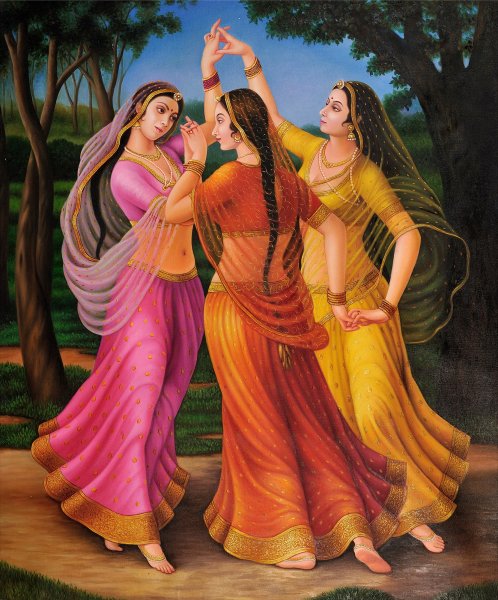
Author: SBSK















































